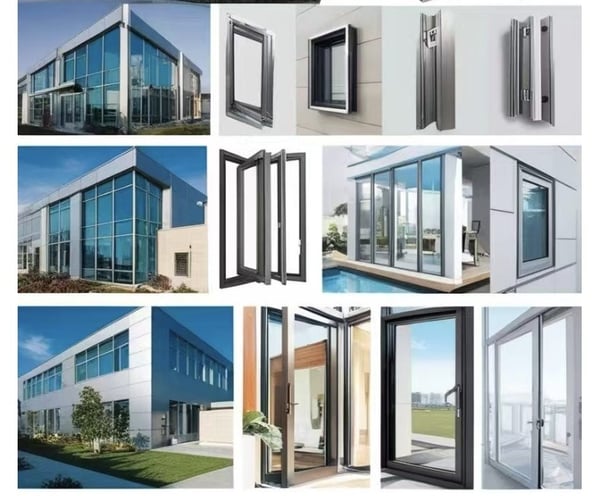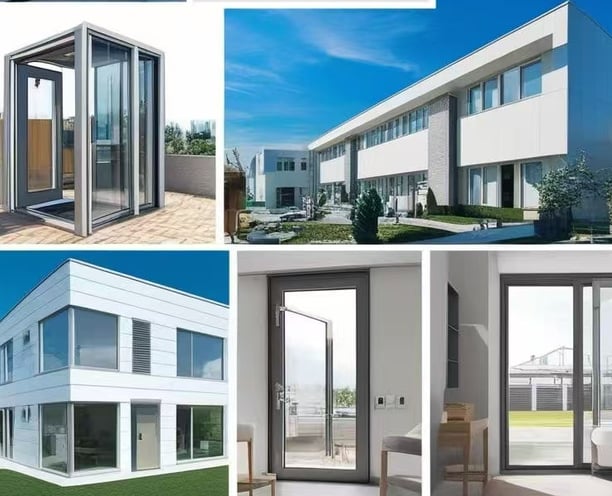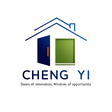Global Procurement Trends and Opportunities in the Aluminum Doors and Windows Market
4/18/20254 min read


Overview of the Aluminum Doors and Windows Market
The global aluminum doors and windows market has witnessed significant growth over the past few years, driven by various factors such as urbanization, construction trends, and increasing demand for sustainable building materials. Historical growth trends indicate a steady increase in market size, which is projected to continue as the construction industry expands in both developed and emerging economies. As cities evolve and populations swell, the demand for durable, energy-efficient, and aesthetically pleasing aluminum fixtures has become paramount.
Aluminum doors and windows are increasingly favored for their lightweight properties, durability, and resistance to corrosion. This has led to a heightened interest from builders and homeowners looking for long-lasting solutions. The rapid urbanization observed across regions has fueled ongoing construction projects, subsequently driving the demand for aluminum products. This sector is well-positioned within the broader construction materials market, reflecting a shift towards modern architectural designs and preferences that prioritize energy efficiency.
Moreover, environmental considerations play a crucial role in shaping the aluminum doors and windows market. With a growing emphasis on sustainability, the aluminum sector has taken steps to showcase its commitment to reduced environmental footprints. Aluminum is 100% recyclable, which aligns with the global pursuit of eco-friendly materials. This has made it a preferred choice for many architects and builders, reinforcing the sector's significant contribution to sustainable construction practices and energy efficiency goals.
As the market evolves, stakeholders, including manufacturers and procurement professionals, must closely monitor these trends and opportunities. Generating value in procurement practices will require a firm understanding of the market dynamics influencing the aluminum doors and windows segment, ultimately paving the way for innovation and collaboration in the supply chain.
Current Procurement Trends in the Aluminum Industry
The aluminum doors and windows market is currently experiencing significant changes driven by various procurement trends that are reshaping the industry landscape. One of the most notable trends is the advancement of technology in procurement processes. Innovations such as automated sourcing tools, data analytics, and artificial intelligence are enhancing decision-making capabilities and providing greater transparency throughout the supply chain. This technological shift facilitates quicker procurement cycles and more informed procurement strategies, ultimately leading to cost efficiencies for manufacturers and suppliers alike.
Additionally, supply chain management practices are evolving in response to global challenges such as fluctuating raw material prices and geopolitical tensions. Companies in the aluminum industry are focusing on diversifying their supply sources to mitigate risks associated with reliance on a single supplier or geographical region. Adopting a multi-sourcing strategy not only helps in maintaining continuity but also fosters competitiveness within the procurement environment. This approach is particularly important in the aluminum doors and windows sector, where timely delivery and quality assurance are paramount.
Moreover, the growing influence of digital procurement solutions cannot be overlooked. These platforms streamline procurement operations by providing centralized access to suppliers, pricing information, and contract management tools. As companies seek to enhance their operational efficiencies, digital solutions enable real-time collaboration and communication between procurement teams and suppliers. The trend towards globalization further complements these digital advancements, as organizations can now engage with suppliers from various international markets more effectively.
Lastly, the emphasis on sustainable and ethically sourced materials is becoming integral to procurement strategies. Companies are increasingly prioritizing sustainability, seeking out suppliers who adhere to environmental standards and ethical practices. Partnerships and collaborations in the aluminum industry are essential for enhancing procurement efficiency, as they foster innovation and enable companies to meet both market demands and regulatory requirements.
Opportunities for Stakeholders in the Market
The aluminum doors and windows market presents a myriad of opportunities for stakeholders across various sectors. As the construction and renovation industries continue to evolve, several emerging market segments are gaining substantial traction. One significant area of growth is in the residential sector, where an increasing number of homeowners seek energy-efficient and sustainable building solutions. The integration of aluminum doors and windows as reliable options that offer longevity, strength, and thermal performance positions them favorably in this expanding market.
Regionally, stakeholders have an array of opportunities, particularly in developing economies where urbanization is on the rise. Countries in Asia-Pacific and Latin America are witnessing a surge in infrastructure development, thereby increasing demand for innovative door and window solutions. Stakeholders can capitalize on this opportunity by forming strategic partnerships with local construction firms to provide customized products that meet regional preferences and regulations.
Moreover, the demand for bespoke solutions in aluminum door and window manufacturing continues to soar. As consumers increasingly prioritize personalized aesthetics, stakeholders can invest in design innovations that cater to diverse styles and preferences. This shift towards customized products allows businesses to differentiate themselves within the market, enhancing their competitiveness.
Another trend shaping opportunities in the market is the rising consumer preference for eco-friendly products. Stakeholders can invest in sustainable manufacturing processes and materials, such as using recycled aluminum, which not only address environmental concerns but also align with the growing market demand for green building solutions. Additionally, incorporating smart technology, such as automated openings and security features, into aluminum doors and windows will cater to tech-savvy consumers and create avenues for growth within this competitive landscape.
Future Predictions and Strategic Recommendations
The aluminum doors and windows market is poised for significant growth in the coming years, driven by a variety of factors including increasing demand for energy-efficient products, advances in manufacturing technologies, and rising construction activities across both residential and commercial sectors. As sustainability becomes a core focus for both consumers and businesses alike, manufacturers are increasingly adopting eco-friendly materials and production processes. Therefore, companies in this industry must focus on integrating sustainable practices into their procurement strategies to stay competitive.
Future predictions indicate that the trend towards customization will continue to shape the aluminum doors and windows market. Consumers are increasingly seeking products that not only meet but exceed their specific needs in terms of aesthetics, functionality, and energy efficiency. Thus, companies should invest in technologies that allow for greater customization of products and streamlining of the design process. Collaborating with suppliers who share this innovative vision will be critical for success.
Despite these opportunities, firms must remain vigilant to potential risks, such as supply chain disruptions caused by geopolitical issues or fluctuations in raw material prices. To mitigate these risks, companies are encouraged to diversify their supplier base and develop strong relationships with key partners. Utilizing advanced analytics for demand forecasting can also enhance decision-making and procurement efficiency.
In order to capitalize on the anticipated growth and navigate the challenges ahead, businesses should prioritize digital transformation. Investments in emerging technologies such as artificial intelligence, machine learning, and the Internet of Things (IoT) can improve inventory management, enhance supplier collaboration, and drive cost efficiencies. By aligning their procurement processes with these technological advancements, companies in the aluminum doors and windows market can effectively address both current and future demands. This proactive approach will position them to capture emerging opportunities and respond adeptly to an evolving market landscape.


